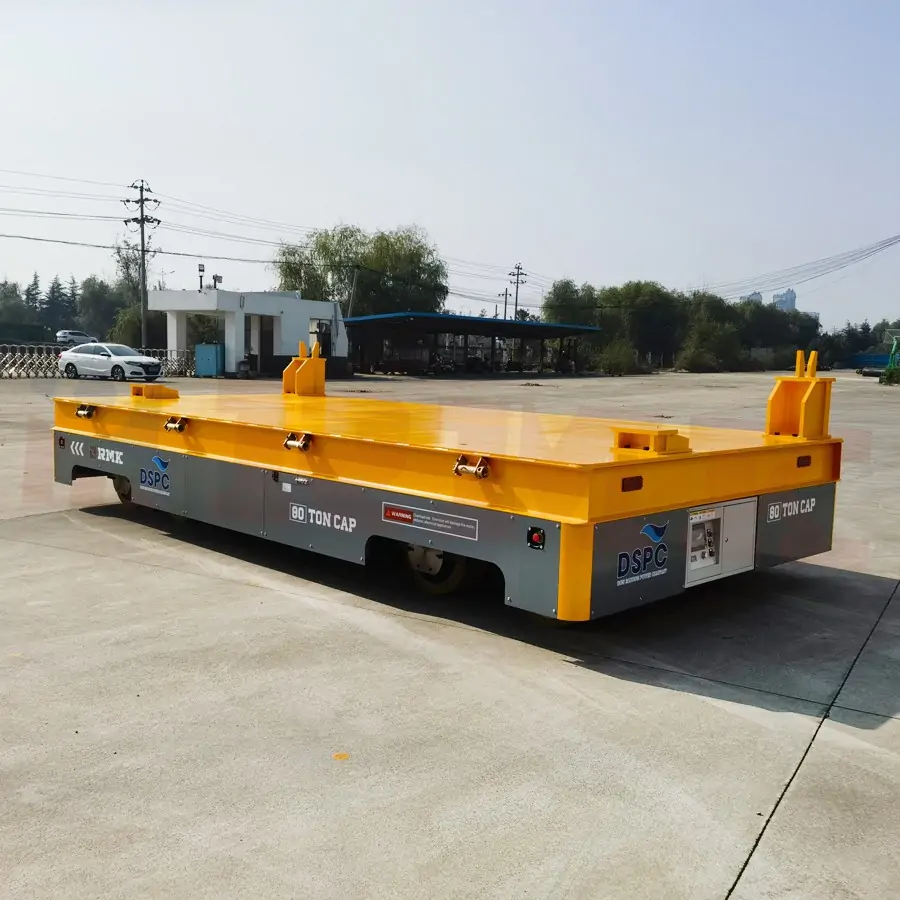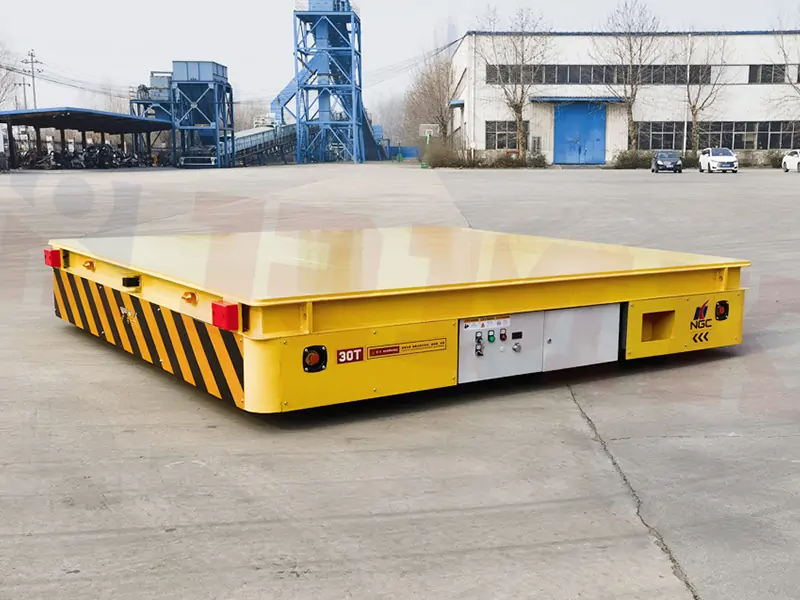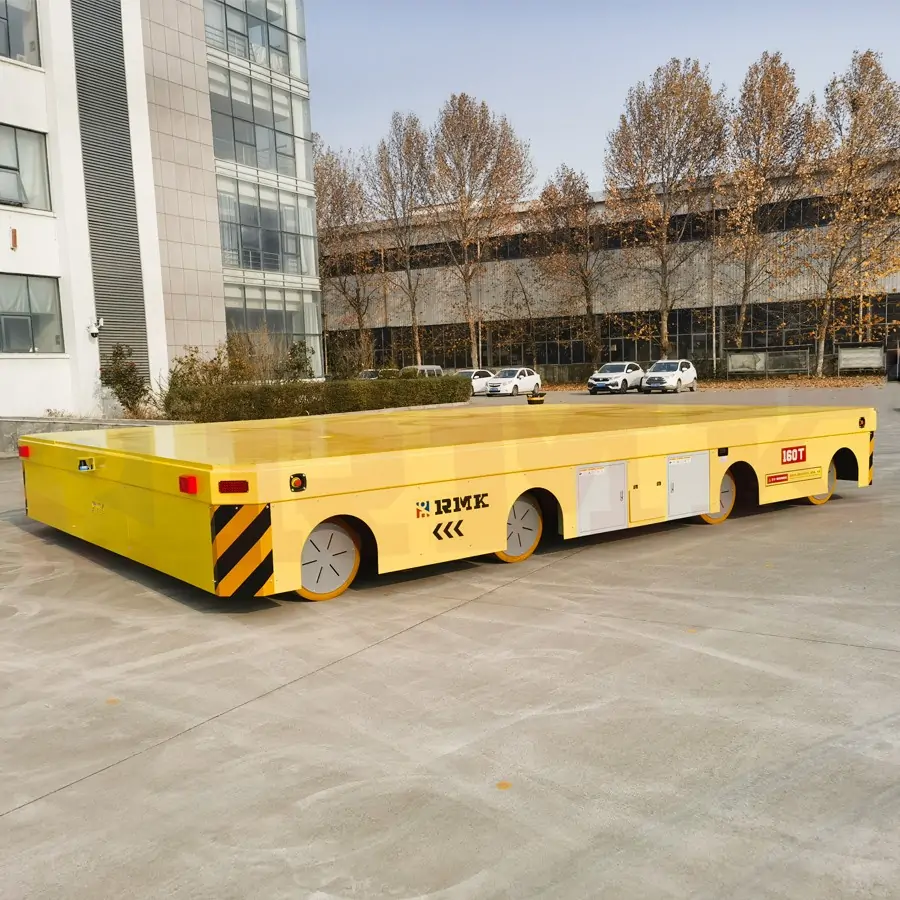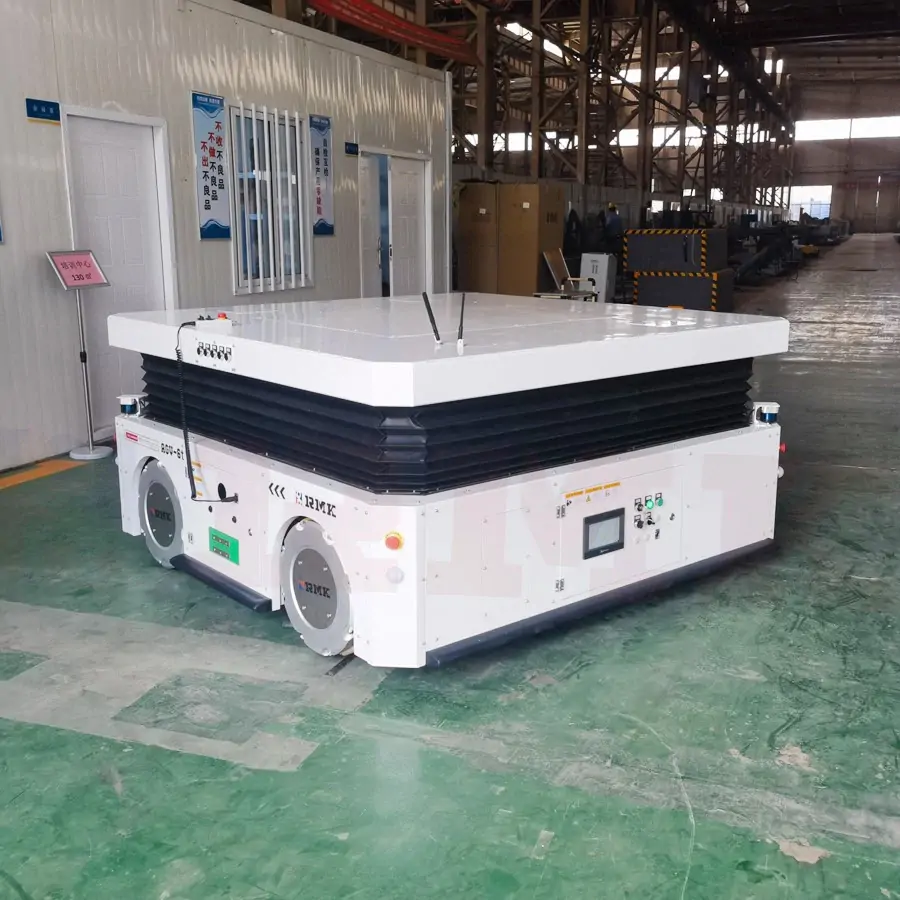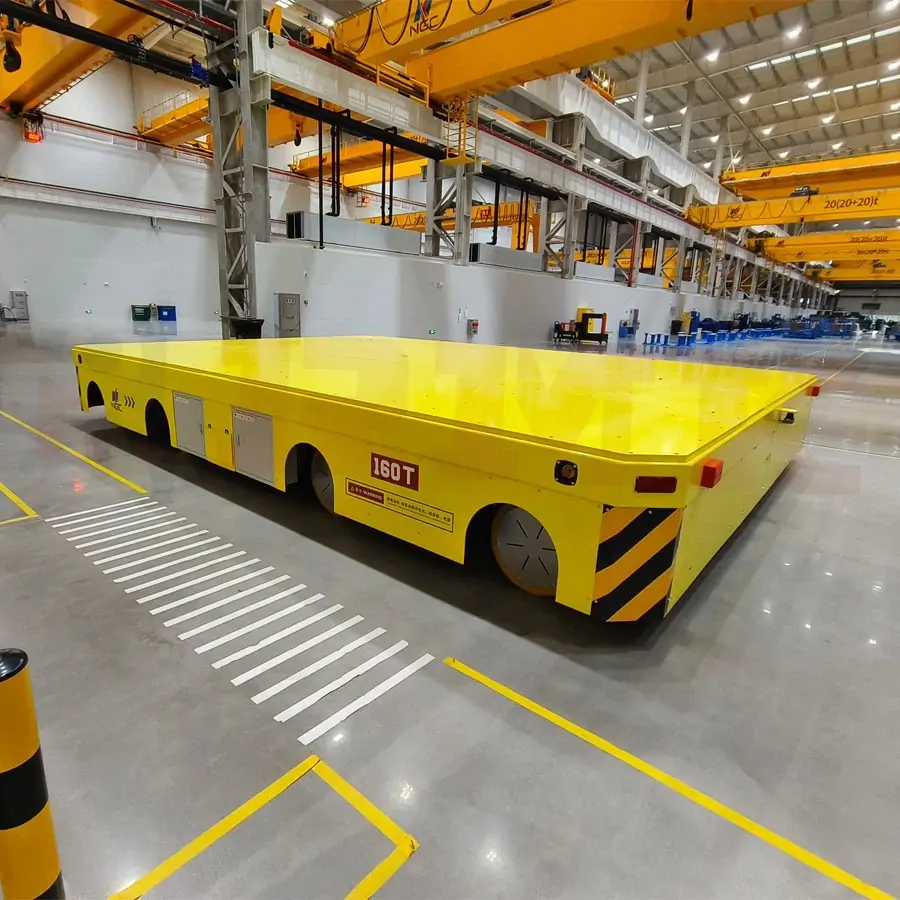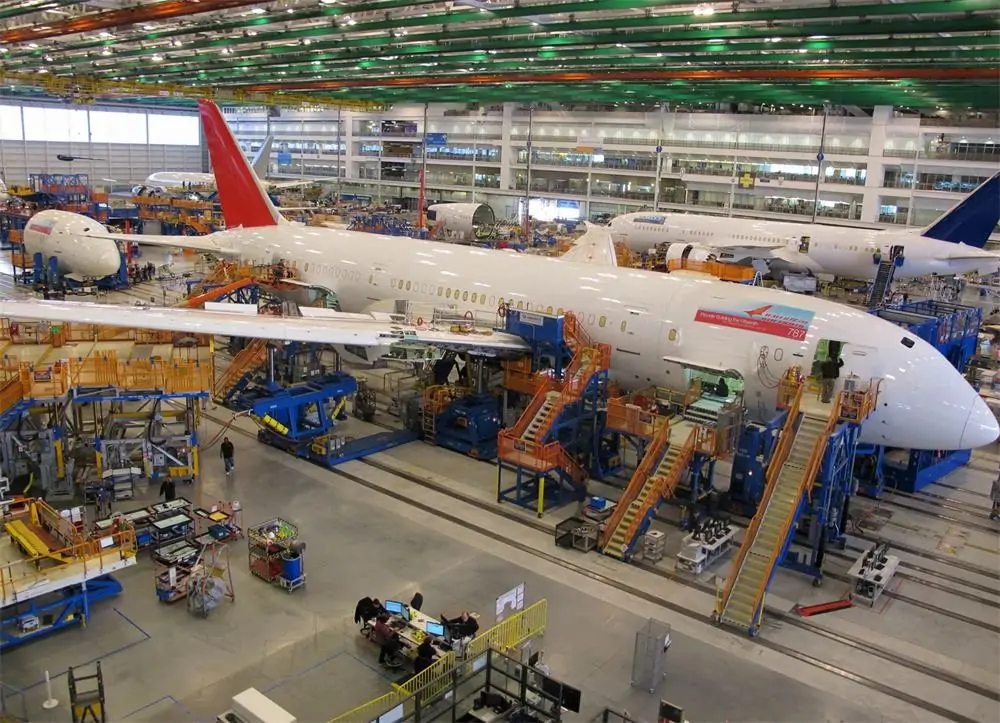
The aerospace industry involves the design, manufacturing, and maintenance of aircraft, spacecraft, and their associated components. Due to the large size and significant weight of structures such as fuselages, wings, and engines, the industry demands highly precise, safe, and efficient material handling systems.
Transfer carts, also referred to as electric transfer vehicles or industrial transport trolleys, are widely used in aerospace production lines and assembly workshops. It provide a reliable solution for the smooth, controlled movement of oversized and heavy aerospace parts between different workstations, fabrication zones, storage areas, and testing platforms.
Recommended Products
Depending on the specific task, the following types of transfer carts are commonly recommended. All models can be custom-built with load capacities ranging from 10 tons to over 100 tons, tailored to the dimensions and sensitivity of aerospace parts.
- Battery Operated Transfer Cart: Suitable for long-distance travel and workshops without rails, with wireless remote control and precision parking.
- Trackless Steerable Transfer Cart: Flexible navigation in confined assembly halls. Capable of 360° rotation, ideal for maneuvering around sensitive equipment.
- Rail-Guided Transfer Cart: Stable, reliable transport along fixed tracks for repeated operations, used for production line integration.
- Heavy-Duty Transfer Cart with Lifting Platform: Equipped with a hydraulic or mechanical lift system for aligning parts to specific assembly heights.
Application
Fuselage section transfer
Moving large fuselage components from subassembly areas to final assembly stations.
Tooling and mold movement
Shifting composite material molds or autoclave loading equipment.
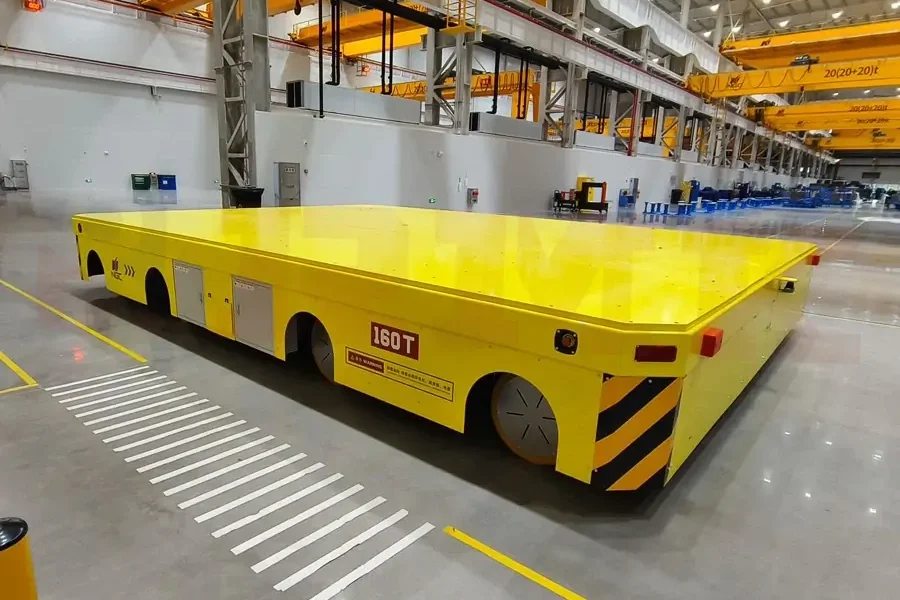
Transport within MRO facilities
Supporting aircraft maintenance and repair operations with mobile platforms.
Engine module handling
Transporting heavy jet engine parts to engine test beds or assembly lines.
Satellite component transfer
Handling delicate payload modules in cleanroom environments.
Advantages
Integrating transfer cart systems into aerospace manufacturing and assembly operations, to improve material handling efficiency, safety, and precision
High-precision Transportation
Adopts servo motors, laser guidance and anti-vibration systems to achieve precise positioning and guarantee smooth transportation of sensitive structures such as aircraft engines and satellite components.
Multiple Safety Protection
Integrated laser radar, mechanical anti-collision device and hydraulic locking system monitor the load status in real time to reduce transportation risks.
Highly Customizable
The modular design supports quick change of tooling (e.g. vacuum chucks, aerospace aluminum brackets), with a load range of 50kg~50 tons, and is suitable for shaped parts such as wings and rocket segments.
Cost Reduction and Efficiency Increase
Replacement of manual + crane combination reduces labor cost and improves the transfer efficiency and safety of core components.
Good Environmental Adaptability
Suitable for -40℃ extreme cold to 60℃ high temperature, explosion-proof (ATEX certification) and clean room scenarios, meeting the needs of Arctic base or precision lens transportation.
Intelligent Collaboration Capability
Achieve automatic path planning through RFID/MES system linkage, real-time data synchronization, and optimize the assembly process.
Customized Intelligent Material Handling Solutions
To ensure that a customized transfer cart fits your needs perfectly, please provide the following details:
- Load Capacity: _____ tons (1~500 ton)
- Table Size: _____ × _____ mm/m (e.g., 1500×3000)
- Power Options:
- ☐ Lead-acid ☐ Lithium-ion ☐ Other: _____
- ☐ Cable: _____V/_____A
- ☐ Standard 380V/50Hz/3-phase
- Cargo Details:
- Type: _____ (e.g., steel coils, machinery)
- Special Needs: _____ (e.g., anti-slip, corrosion-proof)
- Optional Features:
- ☐ Emergency stop ☐ Anti-collision sensors
- ☐ Rail guides ☐ Lifting mechanism ☐ Remote control

